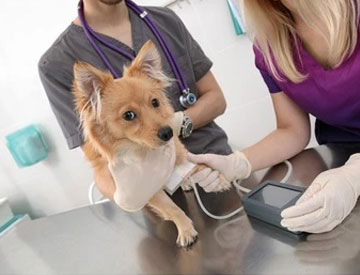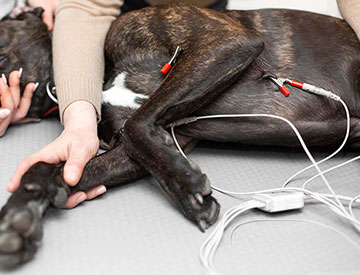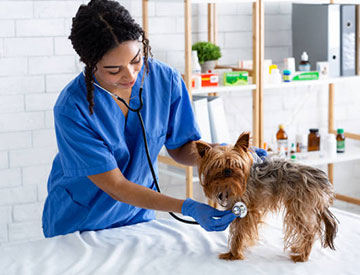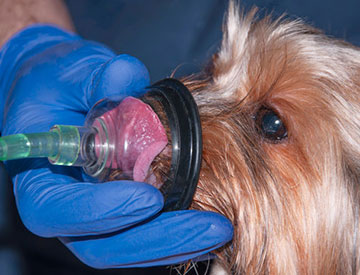 We take the safety of your pet under anesthesia very seriously. Each patient has a drug protocol tailored individually based on species, age, breed and the procedure.
We take the safety of your pet under anesthesia very seriously. Each patient has a drug protocol tailored individually based on species, age, breed and the procedure.
At our hospital, each patient has one or more technicians dedicated full time to your pet’s anesthetic monitoring under the care of the veterinarian. These technicians are with your pet from induction (initiation of anesthesia) right through to their full recovery. Anesthetic maintenance and monitoring are crucial for a successful surgical procedure. During any surgical procedure, the dedicated technician monitors several vital parameters with a hands-on approach; including pulse quality (to identify blood pressure and arrhythmias), mucous membrane colour and capillary refill time, as well as other parameters such as jaw tone and the presence of a palpebral reflex (to assess anesthetic depth). The anesthetic patient is also connected to our monitors which are continuously tracking multiple parameters. We use state of the art equipment for monitoring anesthesia.
It is highly recommended that all the anesthetized patients need to be placed on intravenous fluids (IV) to make sure we have access to the circulatory system in the event of shock or anesthetic emergencies.
Following parameters are monitored:

Blood Pressure Monitoring
Quick and accurate blood pressure monitoring is essential for a patient under anesthesia. Blood pressure is the driving force for blood flow (perfusion) through capillaries that supply oxygen to organs and tissue beds of the body. Low blood pressure results in decreased oxygen delivery, resulting in the death of important cells and organ damage, most sensitively the kidneys and brain. Because lowered blood pressure is a common side effect of many anesthetic drugs, monitoring these values under anesthesia is crucial.

Temperature
Anesthesia always results in a dramatic reduction in body temperature, particularly in long procedures. Decreased body temperatures are associated with prolonged recovery and increase in post-surgical infections.
ECG / EKG / Electrocardiogram


Heart and Respiratory (Breathing) Rate
Heart rate and respiratory rate are measured constantly throughout the anesthetic procedure. These values are useful for many reasons, including assessing anesthetic depth, body temperature, drug reactions, etc. We utilize a combination of our anesthetic monitoring machines as well as our trained technicians who through visualization and the use of a stethoscope, ensure the patient remains stable.
SPO2 – Oxygen Saturation
SPO2 is a measure of the amount of oxygen that is dissolved in the blood stream, carried by red blood cells. This ensures that a patient is receiving adequate amounts of oxygen. Lowered SPO2 can be a result of inadequate breathing, lung disease, excessive intravenous fluids, bleeding, and much more.


